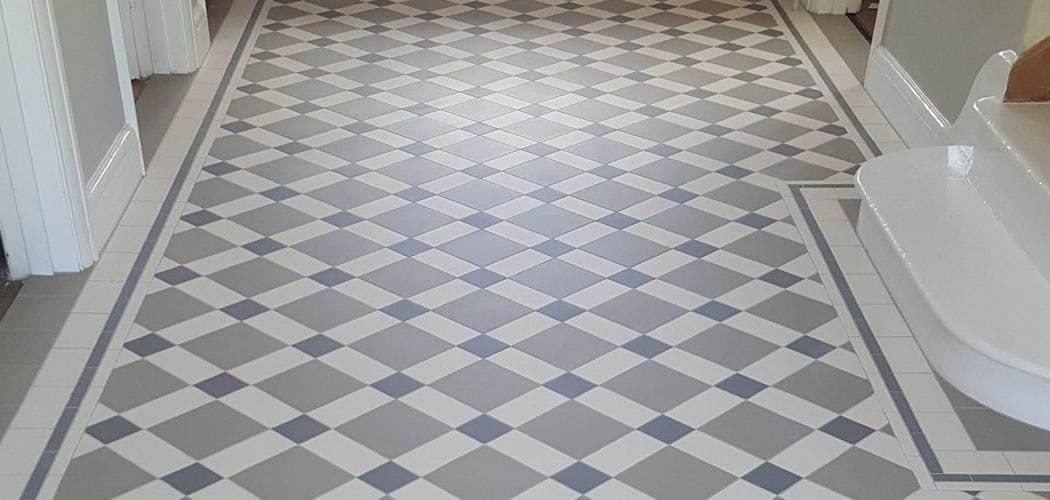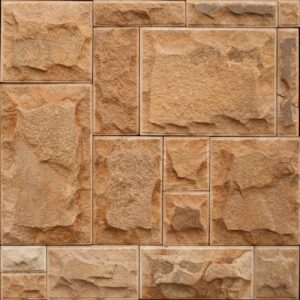Demystifying Tile Adhesives
When it comes to tiling, whether it’s your kitchen, bathroom, or any other space in your home, the adhesive you choose can make or break your project. Understanding tile adhesives can seem like a complex task, but it isn’t. This guide aims to demystify tile adhesives and help you make informed decisions for your tiling projects.
What are Tile Adhesives?
Tile adhesives are substances used to securely attach tiles to surfaces. They work by creating a strong bond between the tile and the substrate, ensuring the tiles stay in place once they’re set. Tile adhesives come in various forms, including ready-mixed pastes and powders that you mix with water.
These adhesives are formulated to withstand various stresses like foot traffic, moisture exposure, and temperature fluctuations that tiles may encounter. They’re typically made of cement, sand, and often contain additives that improve their performance and ease of use.
Importance of Choosing the Right Tile Adhesive
Selecting the right tile adhesive is crucial for the durability and longevity of your tiling work. The correct adhesive ensures a solid bond between the tile and the surface, preventing tile movement and potential damage. It also plays a significant role in achieving a professional-looking finish.
By understanding your specific project requirements – the type of tile, the area of application, and environmental conditions – you can select the appropriate adhesive. For instance, a moisture-resistant adhesive would be a wise choice for a bathroom tiling project, while a heat-resistant one would be ideal for a kitchen backsplash.
Additionally, using the wrong adhesive could lead to a host of problems, such as tiles loosening or falling off, unsightly and uneven finishes, and even costly repairs down the line. Therefore, investing time in understanding tile adhesives and choosing the right one can save you a lot of stress and money in the long run.
Look out for our upcoming sections on different types of tile adhesives, factors to consider when choosing an adhesive, and tips on using tile adhesives. These will provide an in-depth understanding of tile adhesives: a complete guide for a successful tiling project.
Understanding Different Types of Tile Adhesives
When it comes to tiling, the adhesive used is just as important as the tiles chosen. Two common types of tile adhesives that you will encounter in your tiling journey are ready-mixed adhesives and powdered adhesives. Both have their strengths and weaknesses, and understanding these can help you choose the right adhesive for your tiling project.
Ready-Mixed Adhesives
Ready-mixed adhesives, as the name suggests, are pre-prepared and ready to use straight from the container. They are typically used for smaller tiling projects or for wall tiles where the weight of the tiles is less of an issue.
Because they are already premixed, they are quick and easy to use, saving you the time and effort of needing to mix the adhesive yourself. This can be very handy especially if you are new to tiling and unsure about how to properly mix powdered adhesives.
However, ready-mixed adhesives tend to be less flexible and might not be suitable for larger tiling projects or for areas where the tiles may be exposed to a lot of moisture or movement.
Powdered Adhesives
Powdered adhesives, on the other hand, come in a dry powder form that needs to be mixed with water before use. This type of adhesive is often used for larger tiling projects or for floor tiles where a stronger bond is required.
One of the advantages of powdered adhesives is that they are usually more flexible than ready-mixed adhesives. This means they can better accommodate movement or changes in temperature without the tiles cracking or becoming loose.
Moreover, because you mix the adhesive yourself, you can adjust the consistency to suit your specific needs. This can be particularly beneficial in more complex tiling projects where different areas may require different levels of adhesive thickness.
However, mixing powdered adhesives can be a bit tricky, especially for beginners. It’s important to add the right amount of water and mix thoroughly to ensure a consistent and effective adhesive.
In conclusion, the choice between ready-mixed and powdered adhesives will depend on the specifics of your project, including the type and size of the tiles, the area of application, and your own comfort with mixing adhesives.
To learn more about how to choose the right adhesive for your tiling project, check out our article on understanding tile adhesives: a complete guide. For tips on how to apply tile adhesive effectively, refer to our article on advanced tiling tips for commercial projects.
Factors to Consider When Choosing a Tile Adhesive
Selecting the right tile adhesive can make a significant difference in the longevity and appearance of your tile project. However, it’s not a one-size-fits-all situation. Various factors can influence the type of adhesive you should use, including the type of tile, the area of application, and the environmental conditions.
Type of Tile
Different tile types have different requirements when it comes to adhesive. For instance, ceramic tiles can often be affixed with a ready-mixed adhesive, while heavier tiles like stone or porcelain may require a more robust powdered adhesive.
Additionally, some tiles may be more absorbent than others, affecting the adhesive’s drying time. It’s crucial to understand the specific needs of the tile type you’re working with to ensure a strong and lasting bond. Explore our guide on choosing the right tile for your kitchen for more insights.
Area of Application
The area where the tiles will be installed also plays a role in determining the suitable adhesive. For instance, tile adhesives for walls may need to be more ‘grabby’ to prevent tiles from slipping down during installation, while floor tile adhesives need to be able to withstand heavy traffic and weight.
Moreover, areas exposed to moisture, such as bathrooms or outdoor spaces, may require a waterproof adhesive. On the other hand, for areas like kitchens, where heat can be a factor, a heat-resistant adhesive might be a better option. Our article on maximize your space: expert tips for tiling small bathrooms can provide more information on this.
Environmental Conditions
Environmental conditions, such as temperature and humidity, can significantly impact the performance of tile adhesives. Adhesives may take longer to set in cold or highly humid conditions, while in hot, dry environments, they may dry too quickly.
Consider the conditions where the tiles will be installed and choose an adhesive that can perform well in those conditions. Some adhesives are specifically designed for challenging environments, making them a good choice for areas with unusual temperature or humidity levels.
Choosing the right tile adhesive is a critical step in any tiling project. By understanding the requirements of your specific project, you can ensure a successful and long-lasting installation. Take the time to consider all of these factors to make the most informed decision. For additional tips and advice, check out our article on understanding tile adhesives: a complete guide.
Tips for Using Tile Adhesives
Once you have selected the appropriate tile adhesive for your project, the next step is the application process. This can be a crucial phase as it directly impacts the final look and durability of the tiling. Here are some tips on preparing the surface, mixing and applying the adhesive, and understanding the setting and drying time.
Preparing the Surface
The first step in any tiling project is to prepare the surface. This should be clean, dry, and free of any dust, debris, or loose materials that may interfere with the adhesive bond. If the surface is not prepared correctly, this can lead to problems such as loose tiles or an uneven finish. For surfaces with existing paint or wallpaper, these coatings need to be fully removed before applying the adhesive.
It’s also vital to ensure the surface is level. If the surface has any dips or bumps, consider using a leveling compound to create a smooth, even base for the tiles.
For more advanced tips on surface preparation, check out our guide on advanced tiling tips for commercial projects.
Mixing and Applying Tile Adhesive
The next step is to mix the tile adhesive. If you’re using a ready-mixed adhesive, this step can be skipped. However, for powdered adhesives, it’s crucial to follow the manufacturer’s instructions for the correct water-to-powder ratio. Over or under-watering can affect the adhesive’s strength and drying time.
Once the adhesive is mixed, it’s time to apply it to the surface. Use a notched trowel to spread the adhesive evenly, ensuring full coverage. The size of the notches on the trowel should correspond with the size of the tiles being used—the larger the tile, the larger the notches should be.
After the adhesive is applied, the tiles can be pressed into place. Apply a firm, even pressure to ensure the tile is fully bonded with the adhesive.
For more detailed instructions on the application process, refer to our article on tile leveling systems explained: achieving professional results.
Setting and Drying Time
After the tiles have been placed, it’s important to allow sufficient time for the adhesive to dry. The setting and drying time can vary depending on the type of adhesive used, the size and type of the tiles, and the environmental conditions.
As a general rule, it’s best to wait at least 24 hours before walking on the tiled area or applying grout. However, some adhesives may require a longer drying time—always refer to the manufacturer’s instructions for the specific drying time.
Remember, rushing the drying process can lead to loose tiles or an uneven finish, so patience is key. For more tips on achieving a perfect finish, read our guide on grouting techniques for perfect finishes every time.
In summary, understanding tile adhesives and how to use them effectively can make a big difference in the success of your tiling project. With the right preparation, application, and patience, you can achieve professional-quality results every time.
Common Mistakes to Avoid with Tile Adhesives
When it comes to the world of tiling, understanding tile adhesives is an essential part of the process. However, mistakes can easily be made, especially when one is not familiar with the nuances of tile adhesives. In this section, we’ll discuss the common errors that people make and how to avoid them.
Using the Wrong Adhesive
One of the most common mistakes when it comes to tiling is using the wrong type of adhesive. Different types of tiles and surfaces require specific types of adhesives. Using the wrong adhesive can lead to tiles not sticking properly or even falling off over time.
For instance, ceramic tiles may require a different adhesive compared to porcelain or natural stone tiles. It’s important to do your research or consult with a professional to ensure that you’re using the right adhesive for your specific project. You can find more about this in our article on understanding tile adhesives: a complete guide.
Improper Mixing
Another common mistake is improper mixing of the adhesive. This usually applies to powdered adhesives, which need to be mixed with a specific amount of water before use. If the adhesive is too thin, it may not hold the tiles properly. Conversely, if it’s too thick, it can be difficult to spread and may lead to an uneven surface.
To avoid this, always follow the manufacturer’s instructions when mixing the adhesive. The consistency should be similar to that of a thick paste, allowing it to hold the tile in place without dripping or sagging.
Incorrect Application Techniques
The way you apply the tile adhesive can also impact the success of your tiling project. Applying too much adhesive can result in it seeping out from the edges of the tiles, while applying too little may not provide enough bond for the tile to stick properly.
A common technique is to apply the adhesive to the substrate using a notched trowel, which helps to create uniform ridges of adhesive. The tile is then pressed into the adhesive, ensuring a strong bond. Always check the adhesive instructions for the recommended trowel size and technique.
Remember, practice makes perfect. Don’t be discouraged if your first few attempts aren’t perfect. Tiling is an art in its own right and requires patience and precision. For more tips and techniques, check out our articles on DIY tiling mistakes to avoid for homeowners and advanced tiling tips for commercial projects.
By avoiding these common mistakes, you can ensure a successful tiling project that stands the test of time. Always take the time to understand the materials you’re working with and don’t be afraid to seek professional advice if you’re unsure. Happy tiling!
Q&A on Tile Adhesives
In this section, we answer some common questions about tile adhesives to provide you with a better understanding and assist you in making informed decisions for your tiling needs.
Can I use the same adhesive for all types of tiles?
No, not all adhesives are suitable for all types of tiles. The choice of adhesive depends on many factors, including the type of tile, the area of application, and environmental conditions. For instance, heavier tiles require a stronger adhesive, while outdoor tiles need an adhesive capable of withstanding weather conditions. Therefore, it’s essential to choose the right adhesive to ensure the durability of your tiling project. Refer to our guide on choosing the right tile for your kitchen for more information.
What happens if I use the wrong adhesive?
Using the wrong adhesive can lead to several issues, such as tiles not adhering properly, tiles slipping, or the adhesive not drying correctly. In the worst-case scenario, the tiles may fall off, leading to rework and additional costs. To avoid these problems, it’s crucial to choose the right adhesive for your specific tiling project. Check out our article on DIY tiling mistakes to avoid for homeowners for more insights.
Can I change the adhesive after the tiles are set?
No, once the tiles are set and the adhesive has dried, it’s not possible to change the adhesive without removing the tiles. This can be a difficult and potentially damaging process. Therefore, it’s better to spend time choosing the right adhesive before starting the tiling project. If you’re unsure, consider consulting a professional or refer to our article on understanding tile adhesives: a complete guide for more information.
By understanding the role and importance of tile adhesives, you can ensure the success and longevity of your tiling projects. Remember, the choice of adhesive is just as important as the choice of tiles. If in doubt, don’t hesitate to seek professional advice.




